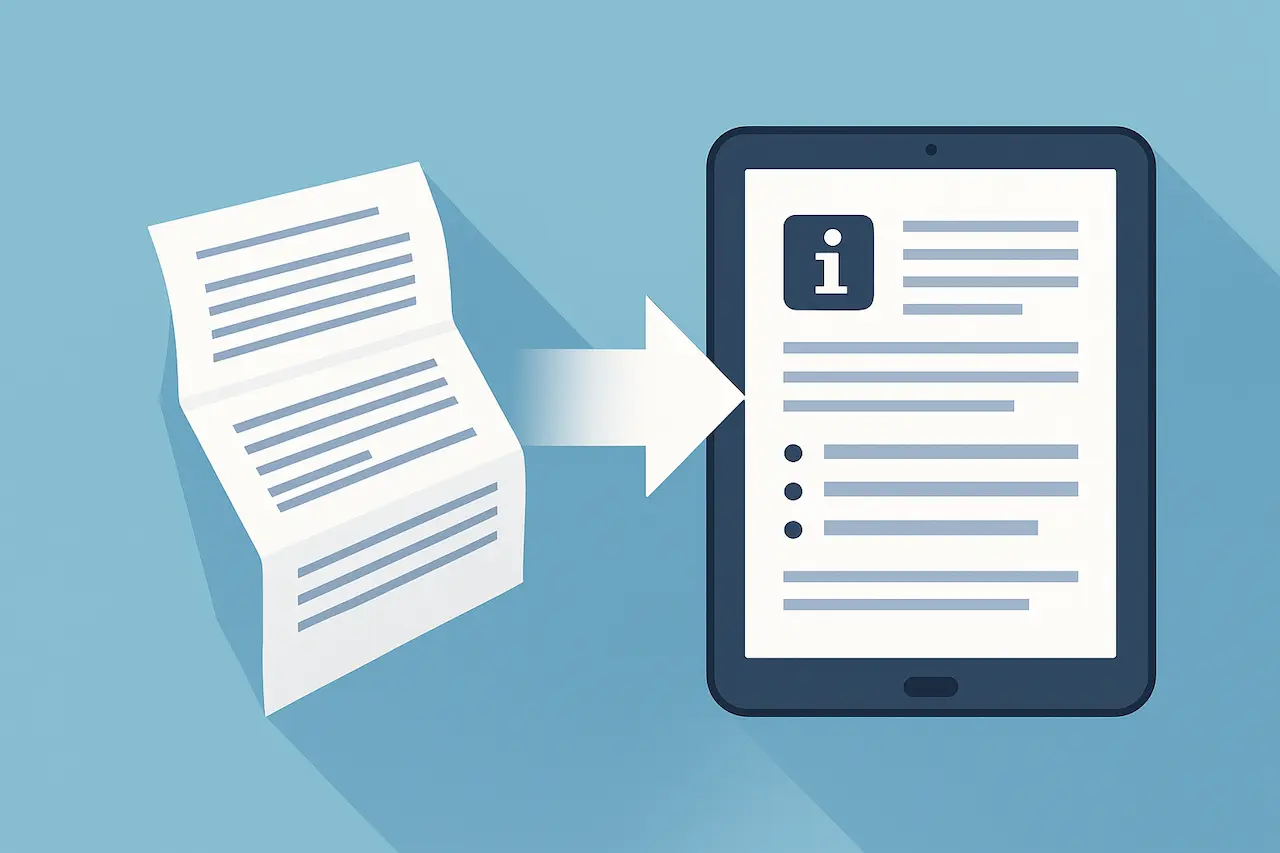Across Europe, momentum is building around electronic product information (ePI) – the idea that medicines information, whether aimed at healthcare professionals (HCPs) or patients, should be accessed digitally rather than through printed leaflets.
In Belgium and Luxembourg, regulators have piloted electronic patient information leaflets (e-PILs) for hospital-only medicines. The results have been encouraging: pharmacists and HCPs reported no disruption to their workflows, paper waste was reduced, and patients rarely requested the physical leaflet. It’s a small but significant step toward a digital-first model for medicines information.
So where does this leave the UK?
The current UK position
Under existing MHRA regulations, all medicines supplied in the UK must still include a paper patient information leaflet in the packaging. That makes the Belgian and Luxembourg pilots interesting case studies, but not directly transferable to our market — at least not yet.
That said, the UK is not ignoring this shift. The UK ePI Task Force, a cross-industry group including regulators, pharma companies, and the NHS, has been reviewing how electronic product information might work here. Their focus is on ensuring accessibility, patient safety, and regulatory compliance while exploring the benefits of going digital.
Why it matters to pharma in the UK
Moving away from printed information brings both opportunities and challenges.
Opportunities:
- Reduced costs and waste – The Belgian pilot reported an 88% reduction in leaflet-related waste.¹
- Up-to-date access – In the pilot, 96% of e-leaflet consultations were done online, with only 4% requiring printouts.¹
- Improved workflow – 98% of pharmacists reported no inconvenience from the absence of paper leaflets.¹
Challenges:
- Regulatory inertia – UK law still mandates paper leaflets (Human Medicines Regulations 2012).
- Digital exclusion risks – Not all patients, carers or even some HCPs are comfortable accessing information online.
- Interoperability – NHS systems remain fragmented, making national-scale integration difficult.
- Trust and liability – Regulators and companies need confidence that digital versions are always accurate and validated.
Lessons from Europe for the UK
Even though the Belgian and Luxembourg e-PIL pilots focused on hospital medicines, there are clear lessons the UK can take:
- Equivalence is key – regulators and stakeholders need to see that digital is at least as safe and reliable as paper.
- Hybrid models may be necessary – an “electronic-first, paper-on-request” approach could provide reassurance during a transition period.
- Stakeholder buy-in matters – Belgian pharmacists embraced the change because it fitted seamlessly into existing workflows. The UK will need to replicate that success through consultation and testing.
Looking ahead
The UK may be behind continental Europe when it comes to piloting ePI, but the direction of travel is clear. The challenge now is not whether the shift will happen, but how it will be implemented in a way that works for patients, healthcare professionals, regulators, and the wider life sciences ecosystem.
A few strategic considerations stand out:
- Hybrid models are likely – A phased approach where digital becomes the default but paper remains available on request could ease transition.
- Governance and version control will be critical – timestamping, validation, and audit trails will be essential to avoid liability risks.
- Education is as important as technology – ensuring that HCPs and patients know how to access reliable digital information will be key to adoption.
- Policy alignment could accelerate change – with UK pharma investment under pressure from rebate schemes and competitiveness concerns, efficient digital information systems may become part of the solution.
Ultimately, electronic product information is about more than swapping paper for pixels. It’s about future-proofing how medicines information is managed and accessed in an increasingly digital healthcare environment. The UK has an opportunity to learn from European pilots but will need a uniquely British model that balances innovation with accessibility and regulatory rigour.
Key Takeaways
- The Belgian/Luxembourg e-PIL pilot showed strong acceptance: 98% of pharmacists reported no inconvenience without paper leaflets.
- The UK still legally requires paper PILs, but the ePI Task Force is actively reviewing options.
- Hybrid models (digital-first, paper on request) may be the most realistic next step for the UK.
- Strong governance, auditability and stakeholder education will be as important as the technology itself.
Final thought
As digital product information evolves, there’s scope to think beyond just replacing paper. Tools such as QR codes linking directly to validated information, integration with prescribing platforms, or even layered content for different audiences (patients, pharmacists, prescribers) could all play a role in the UK’s model.
It’s an area where cross-industry collaboration will be essential and if you’re exploring ideas in this space, we’d be very open to a conversation.
¹ Source: Electronic patient information: Results of the e-PIL pilot from Belgium and Luxembourg hospitals – Regulatory Rapporteur, 2022.

